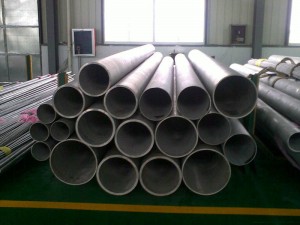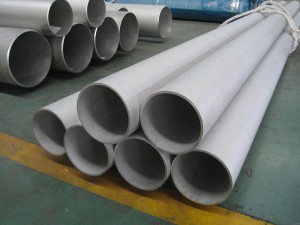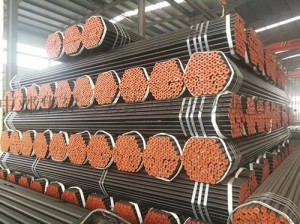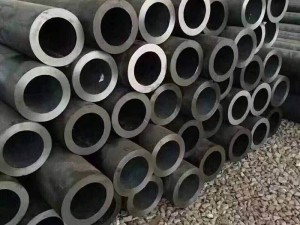TP304L stainless steel pipe with complete specifications
Common marking methods in the market include 06cr19ni10 and SUS304, of which 06cr19ni10 generally refers to national standard production, 304 generally refers to ASTM standard production, and SUS 304 refers to Japanese standard production.
304 is a universal stainless steel, which is widely used to make equipment and parts requiring good comprehensive performance (corrosion resistance and formability). In order to maintain the inherent corrosion resistance of stainless steel, the steel must contain more than 18% chromium and more than 8% nickel. 304 stainless steel is a brand of stainless steel produced according to American ASTM standards.
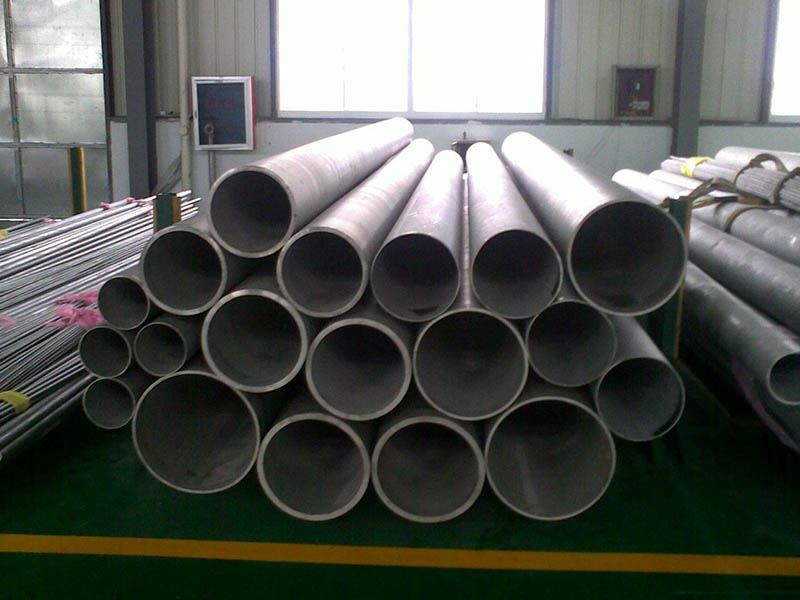
Tensile strength σ b (MPa)≥515-1035
Conditional yield strength σ 0.2 (MPa)≥205
Elongation δ 5 (%)≥40
Reduction of area ψ (%) ≥?
Hardness: ≤ 201hbw; ≤92HRB; ≤210HV
Density (20 ℃, g / cm) ³): seven point nine three
Melting point (℃): 1398 ~ 1454
Specific heat capacity (0 ~ 100 ℃, kJ · kg-1k-1): 0.50
Thermal conductivity (w · M-1 · k-1): (100 ℃) 16.3, (500 ℃) 21.5
Linear expansion coefficient (10-6 · k-1): (0 ~ 100 ℃) 17.2, (0 ~ 500 ℃) 18.4
Resistivity (20 ℃, 10-6 Ω· m2 / M): 0.73
Longitudinal elastic modulus (20 ℃, kn / mm2): 193
For 304 stainless steel, the Ni element in its composition is very important, which directly determines the corrosion resistance and value of 304 stainless steel.
The most important elements in 304 are Ni and Cr, but they are not limited to these two elements. The specific requirements are specified in the product standard. According to the common judgment in the industry, 304 stainless steel can be considered as long as the Ni content is greater than 8% and the Cr content is greater than 18%. This is why this kind of stainless steel is called 18 / 8 stainless steel in the industry. In fact, the relevant product standards have very clear provisions on 304, and these product standards have some differences for different shapes of stainless steel. Here are some common product standards and tests.
To determine whether a material is 304 stainless steel, it must meet the requirements of each element in the product standard. As long as one does not meet the requirements, it cannot be called 304 stainless steel.
Three hundred and four
C
Mn
P
S
Si
Cr
Ni
Requirement,%
≤0.08
≤2.00
≤0.045
≤0.030
≤1.00
18.0–20.0
8.0-11.0
ASTM a240 (chromium and chromium nickel stainless steel plate, sheet sheet, and strip strip for pressure essels and for general applications)
Three hundred and four
C
Mn
P
S
Si
Cr
Ni
N
Requirement,%
≤0.07
≤2.00
≤0.045
≤0.030
≤0.75
17.5–19.5
8.0–10.5
≤0.10
SUS 304
C
Mn
P
S
Si
Cr
Ni
Requirement,%
≤0.08
≤2.00
≤0.045
≤0.030
≤1.00
18.0–20.0
8.0-10.5
SUS 304
C
Mn
P
S
Si
Cr
Ni
Requirement,%
≤0.08
≤2.00
≤0.045
≤0.030
≤1.00
18.0–20.0
8.0-10.5
The above four standards are just a few common standards. In fact, more than these standards are mentioned in ASTM and JIS. In fact, each standard has different requirements for 304, so if you want to determine whether a material is 304, the accurate expression should be whether it meets the 304 requirements in a product standard


